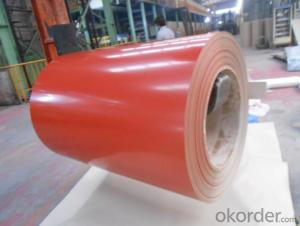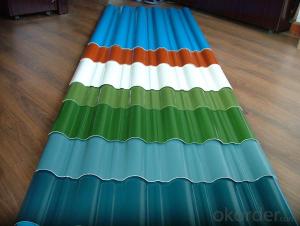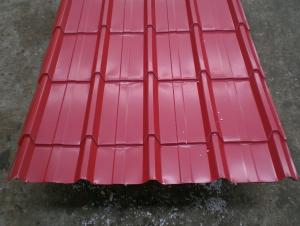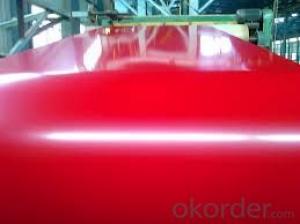PPGI Steel Plate with Aluminum Slats Sheets Prepainted Galvanized Steel Plate
- Loading Port:
- Qingdao
- Payment Terms:
- TT or LC
- Min Order Qty:
- 10 m.t.
- Supply Capability:
- 1000 m.t./month
OKorder Service Pledge
OKorder Financial Service
You Might Also Like
PPGI Steel Platel Prepainted Galvanized Steel Plate
Main Structure of Galvanized Steel Plate
1.Grade:SGCC, CGCC, SPCC, ST01Z, DX51D, A653
2.Standard:JIS G3302 / JIS G3312 / ASTM A653M / A924M 1998/ GBT12754-2006,GB/T9761-1988, GB/T9754-1988, GB/T6739-1996, HG/T3830-2006, HG/T3830-2006, GB/T1732-93, GB/T9286-1998, GB/T1771-1991, GB/T14522-93
3.Raw material:SGCC, SPCC, DC51D, SGHC,A653,201,202,321,301,302,304,304L,316,316L,310,310S,409,410,430,439,443,445,441 and so on
4.Certificate:ISO9001.ISO14001.OHSAS18001
Datas and Description of Galvanized Steel Plate
| Thickness | 0.12mm-2.0mm |
| Width | 600mm-1250mm |
| Tolerance | thickness+/-0.01mm |
| Coil weight | 3-8MT or as you required |
| Zinc coating | ≤275g /m2 |
Main Features of Galvanized Steel Plate
Type :Coil or Plate
Spangle:big / small / no spangle
Hardness:Soft---full hard
Type of coating structure:2/1 or 2/2 coating, or customized
Color options: RAL Color System or as per buyer’s color sample.
FAQ
Q: Why we have to choose you?
A:Chose happens because of quality, then price, we can give you both. Additionally, we can also offer professional products inquiry, products knowledge train (for agents),
Quick goods delivery, our factories locate near the seaport, which is very convenient for transportation.
Q:Guaranteed?
A:If products' quality doesn’t match the description we give or promise before you place your order, we promise 100% refund.
Picture:

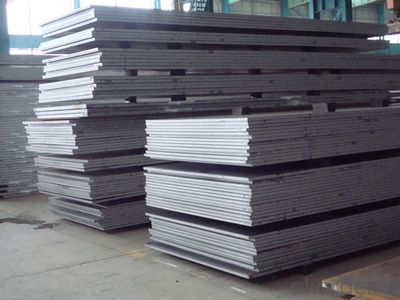
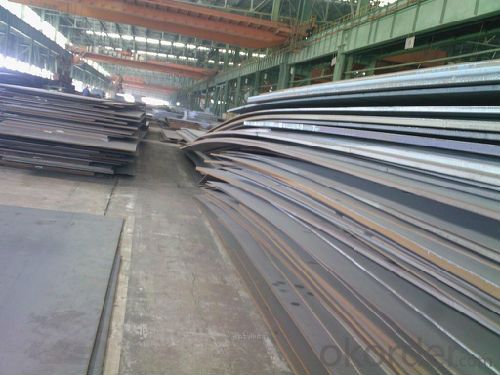
- Q: is aluminum foil spacer poisonous after heating?
- many baked food will use aluminum foil.
- Q: What are the different methods of surface cleaning for aluminum sheets?
- Aluminum sheets can be cleaned using various methods, each with its own advantages and suitability for different cleaning needs. One method is mechanical cleaning, which involves using techniques like brushes, abrasive pads, sandpaper, or a wire brush to remove dirt, stains, and oxidation from the surface. However, caution must be taken to avoid scratching the surface. Chemical cleaning, on the other hand, utilizes specific cleaning agents or solutions designed to dissolve or remove dirt, grease, oil, or other contaminants from aluminum surfaces. The choice of cleaning agent depends on the type of dirt or stain to be removed. High-pressure water cleaning is a method that employs a strong water jet to dislodge dirt or grime from the aluminum surface. It works well for removing loose debris or light dirt from larger areas, but may not be effective for heavily soiled surfaces. Steam cleaning involves using high-temperature steam to loosen dirt, grime, or other contaminants, making them easier to wipe or rinse away. It is versatile and suitable for both small and large surfaces. Another specialized method is electrolytic cleaning, which uses an electric current to remove contaminants. The aluminum sheet is immersed in a cleaning solution, and the electric current attracts the contaminants to a sacrificial electrode, leaving the sheet clean. However, this method requires specialized equipment and expertise. When choosing the appropriate cleaning method, it is important to consider the specific requirements, condition of the sheet, and desired level of cleanliness. Testing the chosen method on a small, inconspicuous area is also advisable to avoid potential damage.
- Q: Can aluminum sheets be bent?
- Yes, aluminum sheets can be bent as they have malleable properties that allow them to be easily shaped or formed into desired angles or curves.
- Q: Are the aluminum sheets suitable for manufacturing sporting equipment?
- Yes, aluminum sheets are suitable for manufacturing sporting equipment. Aluminum is a lightweight and durable material that can be easily molded and shaped into various sporting equipment such as tennis rackets, baseball bats, and golf clubs. It offers excellent strength-to-weight ratio, corrosion resistance, and allows for better performance and maneuverability in sports activities.
- Q: The idea that you can adequately protect yourself from the Alien and government thought transmissions with a 'tin-foil / aluminum hat is just a myth. The correct and real thing to use is an aluminum construction site type of hard-hat. That is why the government and all major defense contractors wore aluminum hard-hats back in the 1950's. The plastic and fiber glass hard-hats that they use now is only because the Aliens got wise to the old aluminum hard-hat trick and outlawed them after the Aliens and their Illuminati minions took over after President Truman got out of office. Everyone knows that.So does any company anywhere in the world currently defy the Alien’s production ban on aluminum hard hats? Or is e-bay and garage sales the only source of aluminum construction site hard hats?
- what's ENMOD we ask with baited breath ... lets find out ... Excluded from the Copenhagen Agenda: Environmental Modification Techniques (ENMOD) and Climate Change The manipulation of climate for military use ... man I could be a great nutter ...I missed my calling ...
- Q: Can aluminum sheets be embossed?
- Indeed, it is possible to emboss aluminum sheets. The act of embossing entails producing a design that is elevated or inset on the surface of a material. Aluminum is a versatile substance that can be easily manipulated, including being subjected to embossing. One can employ different techniques in order to emboss aluminum sheets, such as heat embossing or using tools and machines specifically designed for embossing. By undergoing the embossing process, the aluminum sheets gain texture and depth, resulting in an enhanced appearance suitable for a wide range of applications. These applications may include decorative purposes, signage, nameplates, and even the addition of texture to automotive or architectural accents.
- Q: Can aluminum sheets be used for sign making?
- Sign making can indeed utilize aluminum sheets. The sign making industry favors aluminum for its resilience, lightweight properties, and ability to resist corrosion. It can be effortlessly cut and molded into different dimensions and styles, granting it versatility across various sign types. Moreover, aluminum sheets can undergo painting or coating with vinyl graphics to increase their visual allure, enhancing their ability to attract attention. Ultimately, aluminum sheets present a dependable and economical choice for crafting signs that are both durable and of superior quality.
- Q: 4.0mm five bars, aluminum plate, 4 aluminum plate, one ton, how many square?
- The price is calculated according to the price of aluminum ingot + processing fees (aluminum state), the specific price according to the size of the aluminum plate, zero shear and the whole board price also has the difference, Jiangsu Yi Heng Liu Guangxi Henan Mingtai aluminum has the.
- Q: Are the aluminum sheets suitable for manufacturing heat exchangers?
- Yes, aluminum sheets are suitable for manufacturing heat exchangers. Aluminum is a lightweight and highly conductive material, making it an ideal choice for heat transfer applications. Its excellent thermal conductivity allows for efficient heat transfer, resulting in effective cooling or heating processes. Additionally, aluminum is corrosion-resistant, which is crucial for heat exchangers that come in contact with various fluids. The malleability and formability of aluminum sheets also make them easy to shape into the required designs for heat exchanger components. Overall, aluminum sheets offer several advantages for manufacturing heat exchangers, making them a suitable choice for this application.
- Q: Are the aluminum sheets recyclable?
- Yes, aluminum sheets are highly recyclable. Aluminum is one of the most recyclable materials on the planet, and it can be recycled indefinitely without losing its quality. Recycling aluminum sheets requires less energy compared to producing new aluminum from raw materials, which has significant environmental benefits. The recycling process involves melting down the aluminum sheets to extract the metal, which can then be used to produce new aluminum products. Recycling aluminum sheets not only conserves valuable resources but also helps reduce greenhouse gas emissions and landfill waste. Therefore, it is highly recommended to recycle aluminum sheets whenever possible.
Send your message to us
PPGI Steel Plate with Aluminum Slats Sheets Prepainted Galvanized Steel Plate
- Loading Port:
- Qingdao
- Payment Terms:
- TT or LC
- Min Order Qty:
- 10 m.t.
- Supply Capability:
- 1000 m.t./month
OKorder Service Pledge
OKorder Financial Service
Similar products
Hot products
Hot Searches
Related keywords















